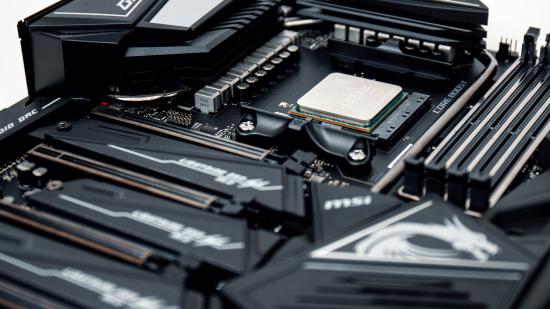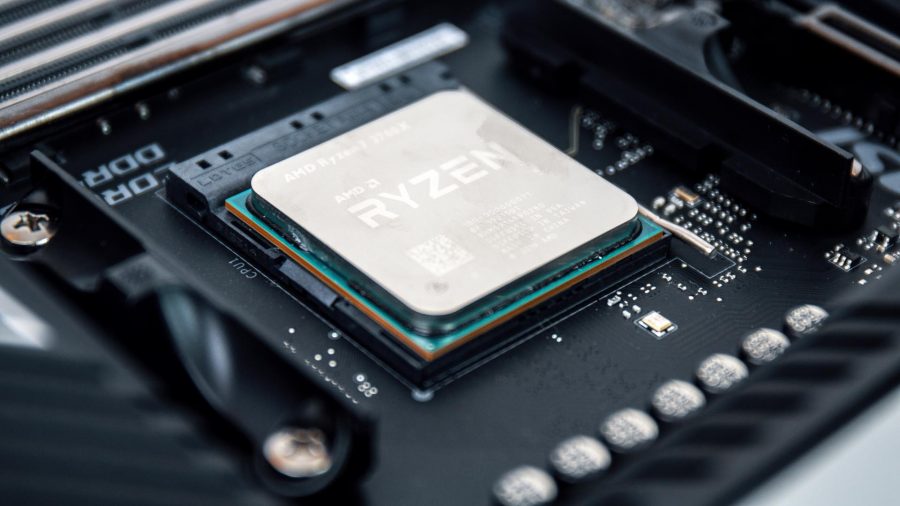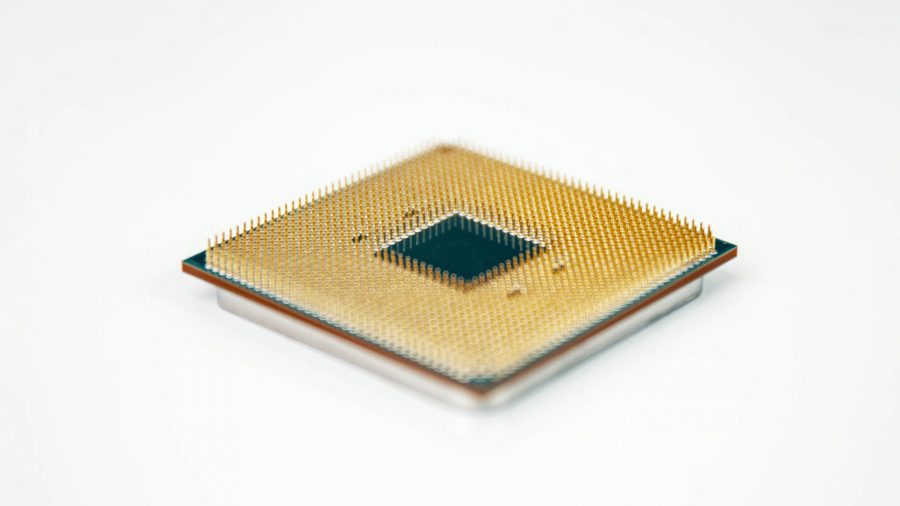How far can you push the 7nm chiplet silicon of the AMD Ryzen 3000 processors beyond its rated specifications? That’s the question we’ll be tackling today as we put the latest and greatest from AMD, specifically the Ryzen 7 3700X, on the test bench for a bout of electrical hubris.
The AMD Ryzen 7 3700X was originally touted by the red team as the most prolific overclocker of the Ryzen 3000 lot. With eight cores and a commanding TDP of 65 watts courtesy of the 7nm process node, it offers by far the most lenient headroom for the avid overclocker – even by AMD’s own account. But is there much heuristic frequency fiddling to be had with even this “crown jewel” of a chip?
AMD believes it has maximised its boosting algorithm, Precision Boost 2, with such efficacy and grace (if you ignore all that squiffy BIOS stuff) that there’s frankly no performance leftover for enthusiasts to eke out of its Zen 2 processors. At least not without a healthy dose of liquid nitrogen.
“The other goal of our engineering effort is to absolutely maximise the performance of the product out of the box,” says AMD senior technical marketing manager, Robert Hallock. “By designing algorithms that extract the maximum silicon performance automatically (e.g. Precision Boost 2) without asking the user to tinker or risk their warranty. So, no, you’re not going to see a whole lot of manual OC headroom. That’s just performance an average person – who doesn’t know how to OC – can’t access. Why would we do that? It is not our intent to leave anything on the table.”
It seems even AMD has its doubts about the overclocking proficiency of Zen 2. Yet we initially had high hopes for the Ryzen 7 3700X when it first graced our test bench.
Prior to Zen 2’s release AMD had claimed that its upcoming 65W chips would be able to “get a lot more” than the couple hundred megahertz available on 105W parts due to their lofty envelope overhead.
Read more: These are the best gaming monitors around
The Ryzen 7 3700X is the only processor above the Ryzen 5 range that is able to squeeze into the 65W TDP. Even with a rather slim power envelope it is able to operate at a 3.6GHz base clock and 4.4GHz max boost clock. For the record, that’s not max all-core. Precision Boost 2 increases and decreases clock speed in a scalar fashion as CPU threads are shifted task to task.

Overclocking Ryzen 3000
Precision Boost Overdrive (PBO) is an important feature available to users via the Ryzen Master software. Along with automatic overclocking this allows for a 100 – 200MHz increase beyond your chip’s rated spec. But PBO doesn’t force frequency directly. There are three limits keeping Ryzen 3000 processors from their ultimate power: PPT, TDC, and EDC. Precision Boost Overdrive removes these limits and replaces them with the maximum values your particular motherboard is capable of.
- PPT is the total socket power. Typically this is limited to 88W on the Ryzen 7 3700X. However, our first stop on this overclocking escapade is to crank this up to 1000W on our MSI MEG X570 ACE. You can do this in Ryzen Master or in the BIOS. We opted for the latter.
- TDC represents the sustained current limit. This determines the current delivered via the VRMs under continuous load. The stock 60A limit can be cranked up all the way to 360A.
- EDC is the peak current limit. This determines the maximum current delivered via the VRMs in short bursts. The stock 90A limit just won’t do, so let’s go with the max value of 480A.
Your maximum values may differ from the above, which is how far our MSI MEG X570 ACE would let us push it. Also available within the BIOS for this specific board is the option to turn the cTDP limit all the way up to 128W. It’s not an option clearly defined with the Ryzen Master utility, and it may be superseded by the aforementioned limits, but we turned it all the way up anyways. Probably fine.
Then it’s onto voltages. We started out with, what we initially believed to be, a generous 1.4v CPU core voltage to Ryzen’s 4.4GHz max clock on all cores. Black screen. Okay, 1.4125v at 44 multiplier. Black screen. Following that same stepping we went all the way up to 1.45v, the red line. No luck, and we weren’t willing to push our sole Ryzen 7 review sample beyond 1.45v only days after launch. You stop caring after a while.
| Frequency (GHz) | Voltage (v) | Success |
| 4.4 | 1.4 | |
| 4.4 | 1.4125 | |
| 4.4 | 1.4250 | |
| 4.4 | 1.4350 | |
| 4.4 | 1.45 | |
| 4.375 | 1.4375 | |
| 4.35 | 1.4375 | |
| 4.3 | 1.4375 |
No luck at 43.75, either. Nor 43.5. But, we finally struck a healthy balance with a x43 multiplier – or 4.3GHz clock speed – at 1.4375v. Just a little below that red line.
Even then it wasn’t entirely stable during our punishing x265 v5.0 encoding benchmark. And single-threaded applications suffered due to the lack of the occasional boost beyond 4.3GHz. So while some multi-threaded applications made marginal use of this all-core clock, few games or synthetic benchmarks showed any improvement whatsoever.
But this is not the end of our experiment. We also slotted the Ryzen 7 3700X into the Asus ROG Strix X470-F, pitting the second-gen Ryzen chipset against its 12W X570 sibling.
After following all the same steps above we found very little difference between the two chipset generations. The X470 is unable to over-provision to quite the extent of the high-end X570, with the theoretical maximum values for PPT, TDC, and EDC maxing out far lower, yet Ryzen still kept its distance under load nonetheless.
The X470 remained stable at 4.3GHz with 1.4375v surging through its VRMs, and scored almost identically in Cinebench R20. Only in X264 v5.0, did the X470 stumble, which similarly caused a single crash on the X570. And regardless, without persuasive numbers to say otherwise, neither chipset offers a particularly strong case for overclocking.
PCGN test bench: MSI MEG ACE X570, 16GB Trident Z Royal, Samsung 970 Evo 2TB, Nvidia RTX 2080 Ti, Corsair HX1200i, Corsair H100i V2, Philips BDM3275, BIOS ver. 7C35v12
Should I overclock Ryzen 3000?
There’s very little to be gained from overclocking the Ryzen 7 3700X. Maybe it’s because Zen 2 is still in its infancy, as is the 7nm process node, or maybe it’s just that all the top binned chiplets are scooped up for the Ryzen 7 3800X. Whatever the reason, this Ryzen 3000 chip doesn’t enjoy us messing around behind the scenes.
The efficiency gains of the 7nm process node are all but forgotten once you crank up the voltages and frequencies. Our Ryzen 7 3700X was gaining on its 14nm predecessor fast, and was within just 12 watts under load in x264 v5.0 of the 12-core Ryzen 9 3900X.
Rather than destroy the power efficiency gains that AMD has been chasing these past few years, you could instead squeeze your memory into the 3,733MHz performance sweet spot. Once enabled, this will also increase the Infinity Fabric clock to 1,800MHz.
After all, this is the soft-touch approach that AMD itself recommends. The benefit of which is minor – very – when making the upgrade from a 3,200MHz kit. But, unlike overclocking, there’s no downside. You’ll likely never notice the one to three frames gained at 1440p and 4K, but we assure you it’s there…
“It’s more beneficial to enable PBO (Precision Boost Overdrive),” Hallock says, “overclock the fabric, overclock the memory. But that’s true of Ryzen 2000 Series, too.”
Upgrade: These are the best graphics cards today
So what was all that pre-release spiel about if not just to whet gamer’s appetites for the Ryzen 7 3700X? Maybe there’s more to this story. But today, even on the latest AGESA update and BIOS version, there’s very little advantage to overclocking your Ryzen 7 3700X. And by extension, due to the 65W chip’s proclaimed overclocking advantage, likely any and all remaining Ryzen 3000 processors, too.
With that I say leave these chips in their stock configuration as Lisa Su intended and start gaming.
Let us know your overclocking experience on Facebook and Twitter.


